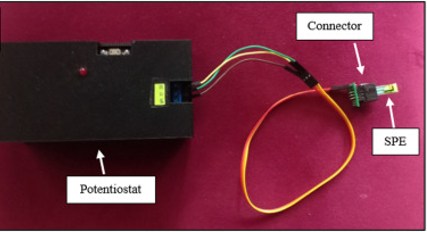Dr.techn.Wikan Danar Sunindyo
School of Electrical Engineering and Informatics
Kristo Abdi Wiguna
School of Electrical Engineering and Informatics
Marcelus Michael Herman Kahari
School of Electrical Engineering and Informatics
Abstract
This study aims to develop an interactive web-based graphical visualization system for detecting potential heart diseases using electrochemical voltammetry techniques, such as Cyclic Voltammetry (CV) and Differential Pulse Voltammetry (DPV). The system is designed to process raw measurement data into easily interpretable information related to cardiac biomarkers, such as cardiac troponin. The backend leverages FastAPI and PostgreSQL technologies to manage data and communication with the user interface. Testing demonstrates that the backend system reliably and efficiently processes and delivers data as needed. By adopting a cloud-based approach for data management and interactive visualization using Plotly on the frontend, this system provides an automated solution for electrochemical data analysis, supporting early and accurate heart disease diagnosis.
Keyword: software, frontend, backend, measurement data analysis, baseline, peak, voltammetry, heart disease
Introduction
Cardiovascular diseases are among the leading causes of mortality worldwide, emphasizing the importance of early detection and accurate diagnosis. Electrochemical voltammetry techniques, such as Cyclic Voltammetry (CV) and Differential Pulse Voltammetry (DPV), have proven effective in identifying cardiac biomarkers, such as troponin, which are critical indicators of heart conditions. However, interpreting voltammetric data often requires specialized expertise, making the process less accessible.
This study presents the development of an interactive, web-based graphical visualization system that automates the analysis of electrochemical data. The system integrates backend technologies, such as FastAPI and PostgreSQL, with a user-friendly frontend visualization framework using Plotly. By providing clear, interpretable visual insights into voltammetry data, this system aims to support healthcare professionals in diagnosing heart diseases more efficiently and accurately.
Research Method
This study employs a structured development approach to create an interactive web application for analyzing electrochemical voltammetry data. The system architecture integrates a backend developed using Python’s FastAPI for processing data and PostgreSQL for database management. The frontend is built with Plotly, enabling dynamic and user-friendly graphical visualization.
The data used in this study includes voltammetric signals obtained from Cyclic Voltammetry (CV) and Differential Pulse Voltammetry (DPV) techniques. These signals are pre-processed and analyzed to extract critical parameters relevant to cardiac biomarker detection.
The development follows iterative testing, ensuring the accuracy of data processing and the responsiveness of the visualization interface. Usability testing was conducted with healthcare professionals to evaluate the application’s practicality and effectiveness in supporting clinical decision-making for cardiac diagnosis. This methodology ensures the system’s reliability, user-centric design, and clinical applicability.


Discussion & Result
The developed system provides a robust and efficient solution for processing and visualizing electrochemical voltammetry data, enabling early detection of heart diseases. Using Cyclic Voltammetry (CV) and Differential Pulse Voltammetry (DPV) techniques, the system accurately identifies cardiac biomarkers such as troponin, which are essential for diagnosing cardiovascular conditions. The backend, built with FastAPI and PostgreSQL, successfully processes raw voltammetric signals, offering reliable baseline corrections and peak detections. Testing demonstrated the system’s ability to handle large datasets efficiently, ensuring its scalability for clinical use.
The frontend, designed with Plotly, delivers interactive and dynamic visualizations, simplifying the interpretation of complex data. Healthcare professionals who participated in usability testing praised the system’s intuitive interface, which allows non-specialists to gain valuable insights into patient health. This capability significantly enhances the workflow of diagnostic processes by reducing reliance on manual data interpretation, ensuring faster and more accurate results. Additionally, the system’s automated pipeline for data analysis minimizes errors and speeds up the decision-making process.
This research highlights the system’s potential to address the challenges of analyzing electrochemical data in clinical settings. By automating time-intensive tasks and providing user-friendly visualization, the system bridges the gap between complex voltammetry data and actionable insights. Future developments could incorporate advanced features like machine learning models for predictive analysis and support for additional biomarkers. These enhancements would further expand the system’s utility and reinforce its role as a valuable tool in modern cardiac diagnostics.
Conclusion
This study developed a web-based system for processing and visualizing electrochemical voltammetry data to enhance early heart disease detection. Using Cyclic Voltammetry (CV) and Differential Pulse Voltammetry (DPV), the system accurately identifies cardiac biomarkers like troponin. Combining FastAP and PostgreSQL for efficient backend processing with Plotly for interactive
visualizations, it reduces manual effort and simplifies complex data interpretation for healthcare professionals
The system proves effective in improving diagnostic workflows and holds promise for scalable clinical use. Future enhancements, including additional biomarkers and machine learning integration, could further solidify its role as a vital tool in cardiovascular diagnostics.